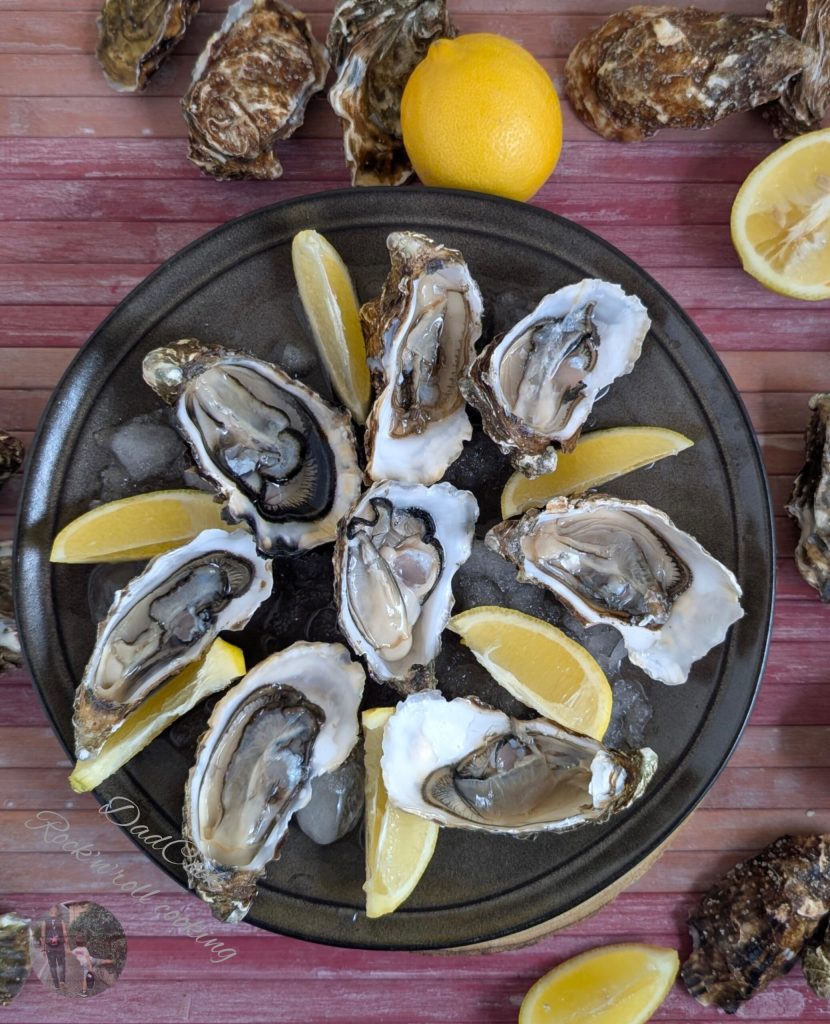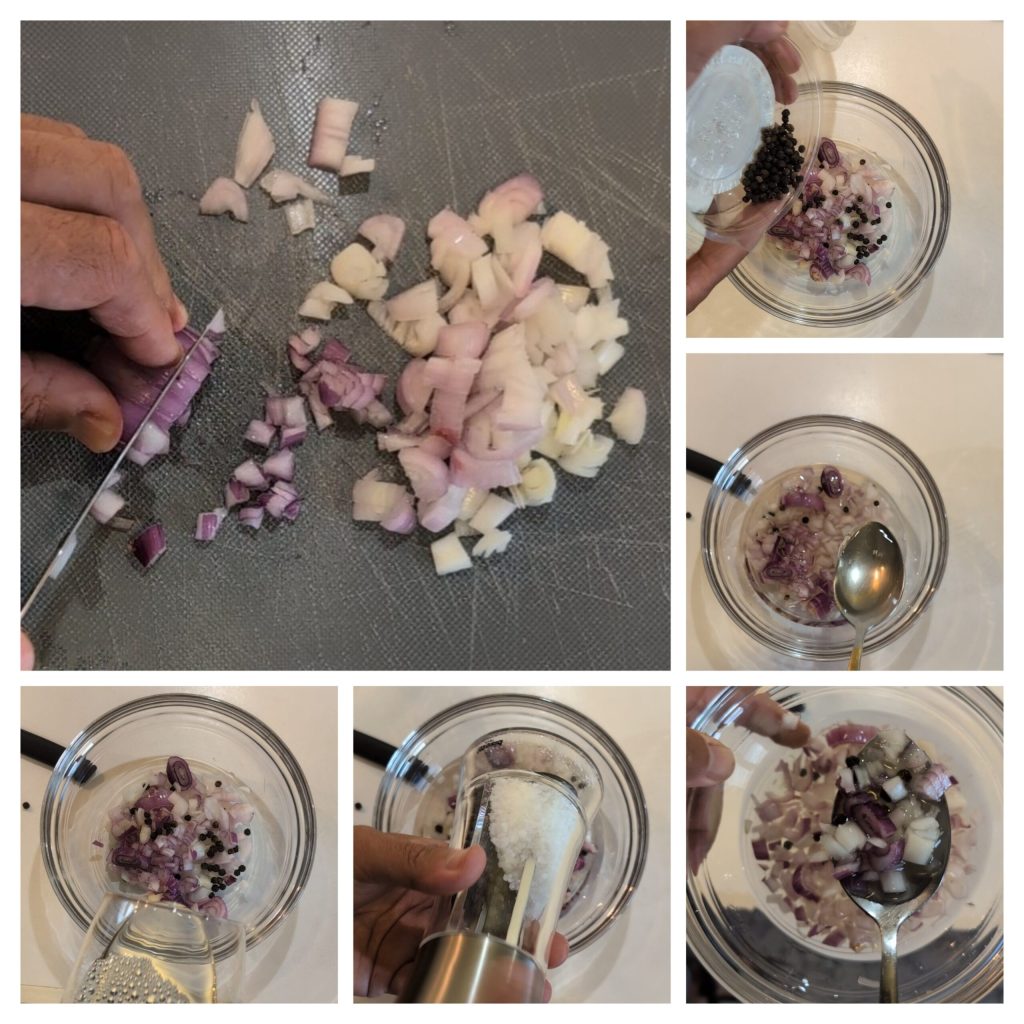A decade of devotion to oysters!
There are flavors that captivate your soul, imprint themselves in your memory, and become a reference point for your palate. For me, oysters in particular represent exactly that. My first encounter with this delicacy occurred over a decade ago in a small Parisian bistro. I still remember their intoxicating freshness, the delicate yet complex taste, a perfect balance between sweetness and salinity. Since that moment, they have become a true gastronomic obsession. Even this year, during my vacation on the Côte d’Azur, I had the pleasure of finding them and enjoying them both at lunch and dinner, rediscovering their magic each time.
Every time I’m in France, or even just near a well-stocked supermarket in Italy, my search begins. And there, among the refrigerated shelves, they appear: Thaëron oysters. Their unique flavor, slightly briny with a hint of hazelnut, is appreciated by many but can be a bit intimidating for less adventurous palates. It’s a flavor that challenges, invites exploration, and evolves with each taste. But what makes these oysters truly special is their ease of opening. Thanks to an ingenious “refining” process, which involves a slight incision of the adductor muscle and the application of a layer of food-grade paraffin, they open effortlessly, even for the inexperienced. A little trick? After removing the paraffin with the tip of the knife, insert the blade into the incision and gently twist it. Et voilà, the oyster will open like magic, ready to be savored in all its freshness. And to make the experience even more memorable, I have prepared a special accompaniment that I will reveal in due time at the end of the recipe.
These oysters are not only a high-quality product, but a complete sensory experience.
A journey into the heart of Brittany, a tribute to the tradition and passion for oyster farming. A flavor that, once tried, is never forgotten
.If you want to delve deeper into the history and production of Thaëron oysters, I invite you to visit their official website at this address:

- Difficulty: Easy
- Cost: Inexpensive
- Rest time: 5 Minutes
- Preparation time: 15 Minutes
- Portions: 2
- Cooking methods: No cooking
- Cuisine: French
- Seasonality: All seasons, Spring, Summer, and Autumn
- Energy 87.56 (Kcal)
- Carbohydrates 7.45 (g) of which sugars 0.99 (g)
- Proteins 12.34 (g)
- Fat 1.09 (g) of which saturated 0.00 (g)of which unsaturated 0.01 (g)
- Fibers 0.22 (g)
- Sodium 706.45 (mg)
Indicative values for a portion of 4 g processed in an automated way starting from the nutritional information available on the CREA* and FoodData Central** databases. It is not food and / or nutritional advice.
* CREATES Food and Nutrition Research Center: https://www.crea.gov.it/alimenti-e-nutrizione https://www.alimentinutrizione.it ** U.S. Department of Agriculture, Agricultural Research Service. FoodData Central, 2019. https://fdc.nal.usda.gov
Ingredients
- 6.6 lbs oysters
- 1 shallot
- Half glass white wine (Prosecco or brut)
- 1 teaspoon vinegar
- A few grains black pepper
- 1 pinch salt
Tools
- 1 Kit Hengyue
- 1 Brush
Steps
First of all, after purchasing the oysters, it is essential to get a suitable kit to avoid domestic accidents. Often, oyster packages include a specific knife for opening, but it is essential to protect your hands from both the sharp shell and the sharp knife, especially if you are not experienced. For this, I recommend using thick gloves.
Find the complete kit to open oysters easily and safely here: Oyster knife set and cut-resistant gloves
After opening the package, before proceeding to open the oysters, it is important to wash them thoroughly. Rinse them under cold running water, and with the help of a kitchen brush, gently scrub each oyster to remove any dirt or impurities that could affect their taste if they end up inside.

Now, equipped with the oyster opening kit, i.e., gloves and a well-pointed knife, locate the hinge of the oyster, where the two shells meet. Gently place the tip of the knife at this point and, with a slight rotating motion, slide it inside for a few millimeters. Once the tip of the knife has penetrated, slide it delicately along the inner edge of the top shell until it is fully open. With the knife blade, separate the fruit from the top shell and repeat the process with all the other oysters.

At this point, equipped with gloves and an oyster knife, locate the hinge of the oyster, where the two shells meet, usually on the narrower side. Gently insert the tip of the knife into the hinge and, with a slight rotating motion, penetrate a few millimeters. Once the tip is inserted, slide it along the inner edge of the top shell until it is fully open. With the blade, detach the fruit from the top shell. Repeat the process with all the other oysters, then gently rinse them with a trickle of running water to remove any shell debris. Be careful not to damage the fruit during washing. Remove all excess water, perhaps by slightly tilting the shell, and set aside the opened oysters.

The oysters are all opened and cleaned, ready to be served! As I promised in the introduction, here’s a delicious sauce to accompany and enjoy them to the fullest: the classic “mignonette“. This is the sauce you’ll find in any bistro or French restaurant serving raw oysters or raw seafood in general as a plateau. It’s very simple to prepare. Just finely chop a shallot and season it in a bowl with white wine vinegar, dry white wine, freshly ground black pepper grains, and a pinch of salt. Let it marinate for about half an hour.

The raw oysters are ready to be plated and served. As you’ve seen, opening and enjoying them is child’s play, without having to spend a fortune in seafood restaurants. You can enjoy them comfortably at home, effortlessly and without even turning on the stove.
For a truly authentic experience, arrange them on a bed of crushed ice to keep them fresh and present them with lemon slices and our delicious mignonette sauce. If you prefer a fizzier touch, you can also accompany the oysters with a glass of dry white wine or Champagne.
Now all you have to do is savor each bite and let the sea transport you! Bon appétit!
Variants and tips for the mignonette sauce:
Personalize your mignonette:
You can add fresh herbs (like parsley or tarragon), a touch of lemon juice, or even a hint of chili for those who love bolder flavors.
Quality ingredients: Use a fresh and high-quality shallot and grind the black pepper at the moment to release all its aroma.
Presentation: Serve the mignonette in a small bowl on the side, so everyone can add it to their liking.
Oysters are a unique culinary experience and enjoying them at their best requires some precautions:
Freshness:
Ensure the oysters are very fresh. Check that the shell is tightly closed and that, once opened, the mollusk is well adhered to the shell and the water inside is clear and abundant.
Temperature:
Serve the oysters well chilled, ideally on a bed of crushed ice. The ideal temperature is between 41 and 50 degrees Fahrenheit.
Natural:
The best way to appreciate the unique flavor of oysters is to enjoy them naturally, without any seasoning. Slightly tilt the shell, sip the seawater, and then savor the mollusk in one bite.
Condiments:
If you prefer, you can add a few drops of lemon, a pinch of freshly ground black pepper, or the classic mignonette sauce made of shallot, vinegar, and white wine.
Pairings:
Oysters pair perfectly with a dry and mineral white wine, such as a Chablis or Muscadet, or even with a Brut Champagne. Alternatively, you can opt for a light beer or a gin-based cocktail.
Some extra tips:
Do not chew:
Oysters should be enjoyed in one bite, without chewing too much.
Experiment:
Don’t be afraid to try different varieties of oysters and experiment with different condiments to find your favorite pairing.
Ambience:
Create a relaxed and convivial atmosphere to enjoy oysters with friends or family.
Remember: The experience of enjoying oysters is as important as their taste. Take your time, savor each single bite, and enjoy this moment of gastronomic pleasure.
Besides the classic Chablis, Muscadet, and Champagne, here are other wines that pair well with oysters, offering various taste nuances:
Italian wines:
Verdicchio dei Castelli di Jesi: A fresh and savory white wine from the Marche region, with notes of citrus and almond. Its minerality and acidity balance the savoriness of oysters.
Fiano di Avellino: An elegant and structured wine from Campania, with aromas of white-fleshed fruit, flowers, and honey. Its aromatic complexity pairs well with the delicacy of oysters.
Greco di Tufo: Another wine from Campania, mineral and savory, with notes of citrus and tropical fruit. Its structure and persistence make it a great match for meatier oysters.
Ribolla Gialla: A fresh and aromatic wine from Friuli, with notes of white flowers, green apple, and citrus. Its liveliness and acidity cleanse the palate after each oyster bite.
Other international wines:
Sauvignon Blanc: A versatile wine produced in various regions worldwide, with notes of citrus, cut grass, and passion fruit. Its acidity and aromaticity pair well with oysters, especially those from cold regions like New Zealand or the Loire Valley.
Grüner Veltliner: An Austrian wine, fresh and spicy, with notes of white pepper, green apple, and citrus. Its structure and minerality make it an interesting match for oysters.
Albariño: A fresh and aromatic Spanish wine, with notes of citrus, white peach, and white flowers. Its savoriness and minerality pair well with oysters, especially those from Galicia.
Riesling: A versatile and long-lived German wine, with notes of citrus, green apple, white flowers, and honey. Its acidity and minerality make it a classic pairing for oysters, especially those from cool regions like Moselle or Rheingau.
Remember: The choice of wine also depends on the type of oysters and the condiments used. Experiment and find the pairing you like best!

